Below is the list of series that are completely translated!
Displaying based on date of completion.
-
Until Two Competitive Girls Bloom Into Lilies
(Completed on Feb 14, 2020 @ 19:00)
-
The Author Reincarnated?!
(Completed on Apr 2, 2017 @ 05:07)
Below is the list of series that are completely translated!
Displaying based on date of completion.
(Completed on Feb 14, 2020 @ 19:00)
(Completed on Apr 2, 2017 @ 05:07)
An anonymized string created from your email address (also called a hash) may be provided to the Gravatar service to see if you are using it. The Gravatar service privacy policy is available here: https://automattic.com/privacy/. After approval of your comment, your profile picture is visible to the public in the context of your comment.
If you visit our login page, we will set a temporary cookie to determine if your browser accepts cookies. This cookie contains no personal data and is discarded when you close your browser.
When you log in, we will also set up several cookies to save your login information and your screen display choices. Login cookies last for two days, and screen options cookies last for a year. If you select “Remember Me”, your login will persist for two weeks. If you log out of your account, the login cookies will be removed.
If you edit or publish an article, an additional cookie will be saved in your browser. This cookie includes no personal data and simply indicates the post ID of the article you just edited. It expires after 1 day.
These websites may collect data about you, use cookies, embed additional third-party tracking, and monitor your interaction with that embedded content, including tracking your interaction with the embedded content if you have an account and are logged in to that website.
For users that register on our website (if any), we also store the personal information they provide in their user profile. All users can see, edit, or delete their personal information at any time (except they cannot change their username). Website administrators can also see and edit that information.
Ads appearing on our site may be delivered to Users by advertising partners, who may set cookies. These cookies allow the ad server to recognize your computer each time they send you an online advertisement to compile non-personal identification information about you or others who use your computer. This information allows ad networks to, among other things, deliver targeted advertisements that they believe will be of most interest to you. This privacy policy does not cover the use of cookies by any advertisers.
We also use your data for advertising purposes. We use third-party advertising companies who serve ads to help keep content free. For these partners, we put additional resources on how your data can be used to prevent it from misuse. For instance, we do not allow these partners to take your information for profiling and personalizing ads on other sites.
Please review the following for a full list of partners and purposes:
– PubGalaxy (Titan Gate AD)
(1) Google: Google Analytics helps us analyze visitor activity on our website. It counts the number of visitors and provides insights into overall behavior, such as the average length of time spent on the site or the number of pages viewed per user. The information collected via Google Analytics is aggregated anonymously and contains no personal data. To learn more about Google Analytics privacy and to opt out of having your data used by Google Analytics, click here.
(2) Azerion: We have authorized Azerion as our advertising partner to process personal data via pixel and similar technologies for the following purposes:
Azerion’s processing of personal data includes operations such as collection, recording, organization, structuring, storage, adaptation or alteration, retrieval, consultation, use, disclosure, transmission, dissemination, or making the data otherwise available. The types of personal data collected include online identifiers such as IP addresses, user agents, HTTP header data, and interest segments about end users who access our pages and information.
Azerion is authorized to engage third parties (such as Amazon Web Services) to process personal data for these purposes.
(3) Third-party websites, products & services: Our site may contain links to or provide access to third-party websites, products, and services. We are not responsible for the privacy practices of these third parties, nor are we responsible for the information or content their products and services contain. This Privacy Policy applies solely to information collected by our site. We recommend reading the privacy policies of any third parties before using their websites, products, or services.
Hi everyone, Selutu here. No, this is not another mass release, that will be in an unknown time in the future, most likely after we got a better server and everything so our site doesn’t overload from everything.
What I’m going to present to you today is a glossary of common Chinese slangs, gaming terms and ACGN terms. It’s something I decided to create in order to show interested readers as well as translators that find it hard to understand/translate these terms.
Even though I said that I created it, it is not completely true, I definitely couldn’t do it without Frozen (from Frozensama) , he pretty much wrote (rather, rewrote) all of the ACGN terms and moe characteristics section.
I hope everyone will find this useful and don’t hesitate to give us suggestions in the comments section.
In the mean time, I shall shamelessly advertise the Very Pure and Ambiguous – The Prequel Fan Art contest.
You can find a list of the most commonly used Chinese Slangs, Gaming Terms, ACGN (Anime, Comics/Manga, Games, Novels) Terms, and other Miscellaneous Terms used in Chinese novels.
Please be reminded that the literal translations are just what they are, “literal translation”. They are by no means the correct translations.
Created by Selutu and Frozen.
Updated by Silva.
| Term | Literal Translation | Meaning |
|---|---|---|
| ドキュン | DQN / Dokyun | Pronounced “dokyun,” it is a derogatory internet slang term that spread from 2ch.net, a Japanese BBS. It mostly means dumbass or idiot, but it can also be used to refer to delinquents and violent, rough, uncultured, uneducated, socially inferior people. Though it used to be just 2channel slang, the term enjoys more widespread use now, and is even used on some English-language discussion boards. |
| Term | Literal Translation | Meaning |
|---|---|---|
| 美眉 / MM | Beautiful Eyebrows | The term originated from a Taiwanese tv drama, in which an actor’s accent caused his pronunciation of 妹妹 (little sister) to sound like 美眉. The term has then grown to mean a pretty girl. |
| 恐龙(妹) | Dinosaur | An ugly girl/woman |
| 蛋疼 | Egg hurt | It’s the feeling you get when you feel very frustrated/annoyed/really pissed off about something (just like when your balls hurt). |
| 卖萌 | Act moe | I think that’s pretty self-explanatory. |
| 屌丝 | Male pubic hair | The original meaning of the term would be a ‘plebeian’. However, it is not often used as a slang for losers as well. |
| 卧槽/我操/我艹/我靠/我擦 | I f̲u̲c̲k̲ (your mom) | Originating from “我肏你妈”, which translates to “I f̲u̲c̲k̲ your mom”, the origin phrase essentially means “f̲u̲c̲k̲ you”. On the other hand, when used by itself it just means “f̲u̲c̲k̲”. The reason this is used is merely to prevent censorship of 我肏. |
| 次奥 | Taken the pinyin of 操 (ciao), it is another way of saying “f̲u̲c̲k̲”. | |
| 尼玛 | 尼玛 as the same pronunciation as 你妈 (your mom). It’s meaning is the same as the previous as being a short form of “I f̲u̲c̲k̲ your mom”. Since 你妈 is often censored, this is used instead. | |
| 你妹 | Your sister | Short for “我操你妹” i.e. I f̲u̲c̲k̲ your sister. It has essentially the same meaning as “f̲u̲c̲k̲ you”. |
| 意淫/YY | Although the term originated from “Dream of the Red Chamber”, it has long since lost its original meaning. The current meaning is “fantasizing”, but it often also has a sexual undertone linked to it. | |
| 跪了 | Kneeled | It expresses the feeling one has when they would kneel, often when admitting a person is truly powerful; or to show admiration. At the same time, it can also be a way of saying that the person is unable to express the speechlessness. 跪了is roughly the Chinese equivalent of “orz”. |
| 毁三观 | Ruin three views | The 三观 (three views) refers to “world view”, “view of life” and “view of value”. 毁三观 is basically used to describe those people or situation that goes against those views. |
| 躺枪/躺着也中枪 | Laying gun / Getting shot even when lying down | The phrase originated from a famous line in the movie “Fight Back to School”, where a random soldier accidentally shot towards the floor, hitting a person that was pretending to be dead on the floor. It is used to express a person’s speechlessness / helplessness when they are uninvolved/innocent/retaining a low profile already. A typical example would be three friends are talking, Friend A and Friend B are insulting each other, then all of a sudden, Friend C got insulted by Friend A out of nowhere. |
| 土豪 | It refers to those filthy rich people that don’t think about spending and doesn’t have much taste. | |
| 坑爹 | Pit dad | This is a term that’s very hard to actually express in English. It can be used to describe when a person/situation screws someone over. A situation -when this is used is when there is a group of people playing a team-based game, but one person just keeps screwing the team over. In that situation, the team would describe him as坑爹 (Keng Die). |
| 高富帅 | Tall Rich Handsome | Rather self-explanatory, it is a term to describe a man that’s tall, rich and handsome. |
| 白富美 | White Rich Beautiful | Rather self-explanatory, it is a term used to describe a woman that has a light skin tone, rich and beautiful |
| 基友 | Gay friend | Although it can be used literally, as a slang word, it just describes two close male friends. |
| 打酱油 | Hitting Soy Sauce | It roughly translates to “passing by” or is used as a term to describe casual players in sports, games etc. |
| 神马 | Divine horse | 神马 is the slang what of saying 什么 (what) |
| 虾米 | Dried Shrimp | 虾米is the slang what of saying 什么 (what), it originated from the Hokkien pronunciation什么. |
| 太监了 | Eunuched | It is a slang way to describe things that didn’t end. E.g. a web novel that the author dropped could be described as太监了 |
| 重口味 | Heavy taste | hardcore |
| 御宅族 / 宅男 | Otaku | The former term means “Otaku”, while the latter term specifically refers to a male otaku. |
| 霉女 | Mold girl | It is slang for referring to a female otaku. |
| 候住 | Taken from the word “hold”, 候住 means “hold it”. | |
| 偶 | It is a slang way of referring to “me”. | |
| 熟女 | Mature woman | |
| 露肉 | Revealing meat | It means “revealing” as in revealing your body. So a revealing piece of clothing would be 露肉装, and if someone is revealing a lot of skin, they would be doing the process of 露肉. |
| 败家 | Defeat home | A person that just waste away the family’s money without care. |
| 打炮 / 打飞机 | Hit cannon / Hit the Plane | Male masturbation |
| 撸管 | Rub the Pipe | Male masturbation |
| 啪啪 | Pa pa | It originates from the sound of two people’s body colliding during sex. It just means having sex. |
| 特麼 / TM | His Mother | 特麼 has the same pronunciation as 他妈, a Chinese slang that literally means f̲u̲c̲k̲ you. |
| 草泥马 | Grass Mud Horse | The Grass Mud Horse or Cǎonímǎ (草泥马) is a Chinese Internet meme widely used as a euphemism for the cursing phrase cào nǐ mā (肏你妈). It is a wordplay on the Mandarin words cào nǐ mā (肏你妈), literally, “f̲u̲c̲k̲ your mother”, and is one of the 10 mythical creatures created in a hoax article on Baidu Baike in early 2009 whose names form obscene puns. It has become an Internet chat forum cult phenomenon in China and has garnered worldwide press attention, with videos, cartoons, and merchandise of the animal (which is said to resemble the alpaca), having appeared. |
| 撩阴腿 | Basically, it means “kick the t̲e̲s̲t̲i̲c̲l̲e̲”. | |
| 弓虽女干 | R̲a̲p̲e̲ | The original word is 强奸, which means r̲a̲p̲e̲. It is separated into four Chinese Characters in order to avoid censorship. |
| 车仑女干 | G̲a̲n̲g̲b̲a̲n̲g̲ | The original word is 轮奸, which means g̲a̲n̲g̲b̲a̲n̲g̲. It is separated into four Chinese Characters in order to avoid censorship. |
| 打起十二分精神 | Raise up your spirit to twelve grades | A Cantonese saying which basically means to concentrate/focus. |
| 罗刹族人 | Rakshasa Clan | This is what “Russian” is known as a few centuries ago. |
| 丹田 | Dantian | Dantian, dan t’ian, dan tien or tan t’ien is loosely translated as “elixir field”, “sea of qi”, or simply “energy center”. Dantian are the “qi focus flow centers”, important focal points for meditative and exercise techniques such as qigong, martial arts such as t’ai chi ch’uan, and in traditional Chinese medicine. |
| 识海 | Energy Core | Also known as Sea of Consciousness. |
| 魯蛇 | Foolish Snake | A loan word for: Loser |
| B-站 | B-site | Bilibili (simplified Chinese: 哔哩哔哩), also nicknamed B Site (Chinese: B站), is a Chinese video sharing website based in Shanghai |
| 3P | T̲h̲r̲e̲e̲s̲o̲m̲e̲ | 3P means t̲h̲r̲e̲e̲s̲o̲m̲e̲, ie three person. 4P means f̲o̲u̲r̲s̲o̲m̲e̲. N basically means an undefined large number. So, NP到死 means g̲a̲n̲g̲b̲a̲n̲g̲e̲d̲ to death. Metaphorically rather than literally death. |
| 6的不行 | Top Quality | 6 is slang for being 一流 or the best |
| 装13 | Flexing | 装13 = 装B = 装逼 = to act like a pretentious prick |
| 七七四十九 | 7749 | There are many variant of this, such as 5525, 7749, 8864, and 9981, but all of them has one thing in common, the last two numbers are the multiplication of the first two. Writing out the times table is a common Chinese idiom to emphasize the last two numbers. |
| Term | Literal Translation | Meaning and Origins |
|---|---|---|
| 上单 | Solo Top | It is a MOBA term. |
| 中单 | Solo Mid | It is a MOBA term. |
| 打野 | Jungle | It is a MOBA term. |
| 辅助 | Support | |
| W冲 | Suicidal Charge | You don’t even try to bob and weave, you just go straight forward, as though you were just pressing W-movement on a keyboard. |
| 喷Z | Shotgun | Short for 喷子, which is slang for shotguns 散弹枪 in PUBG. |
| 菜鸡 / 菜鸟 | Vegetable Bird / Chicken | It’s a slang for ‘newbie’ in games, a target that’s very easy to pick off in fps etc. |
| 非洲人 | African | Originating from KanColle, it is the term referring to a very unlucky person |
| 亚洲人 | Asian | Originating from KanColle, it is the term referring to a person with average luck. |
| 欧洲人 / 欧神 | European | Originating from KanColle, it is the term referring to a very lucky person. Can be translated as lucksack. |
| 坦克/肉盾 | Tank / Meat Shield | Someone who ‘tanks’ for the team, i.e. takes all the damage |
| 风筝 | Kite | Same as the literal meaning, it refers to the act of ‘kiting’ |
| 爆头 | Headshot | |
| 666 / 6 | 666 / 6 | It is used to describe a person doing something very cool. For example, if Person A did something very cool, Person B would say, “666.” Or “You are so 6.” |
| 晒晒 | Show show | Show off |
| 金手指 | Gold Finger | A gaming slang that refers to “cheats”. |
| 自动挂机 | AFK Grinding | The act of grinding automatically while the player is “away from keyboard”. |
| 内测 | Closed Beta | A testing arrangement in which a beta test version of software is distributed to a small group of testers. |
| 肉搏 | Close Combat | Fight hand-to-hand / engage in melee. |
| 刷怪 | Sweep Mob | Typically used to refer to “grinding”. |
| 缠斗 | Hit and Run | A hit and run strategy in close-range. |
| 菜刀队 | Glass Cannon Party | A party that consist of high attack low defense classes. |
| 关底翻牌 | Bonus Round | Is a game mechanism in many moba games, where after players cleared a level, they will be given a chance to flip 3-5 hidden cards. The cards contain rare skins, heroes, and other things. Typical example would be overwatch, league of legends, or honour of king. |
| Terms | (Literal) Translation | Meaning |
|---|---|---|
| 元气 | Genki | Energetic/cheerful person. |
| 腐女 | Fujoshi (rotten girl) | Japanese term for girls who are fans of BL novels, manga, etc. |
| 萌 | Moe (new sprouts appearing from the ground) | On the contrary, to what Moe originally meant, it turned into a slang for describing one’s emotional affections towards a 2D character. (games, novels, manga, etc) |
| 御姐 | Onee-san | Older sister character type. |
| 女王 | Queen | Dominating character |
| 正太 | Shota | Little boy. |
| 萝莉 | Loli | Little girl. |
| 乙女 | Otome | Young maiden. |
| 中二病 | Chuunibyou | 8th grader syndrome. Time period when person (usually around 14yrs old) is under the delusions that world spins around them (they are the greatest, main characters of the world. Etc). Usually used in anime for characters thinking they have superpowers. |
| 天然呆 | Tennen Boke (Natural Airhead) | A person that naturally acts clueless/stupid/unaware |
| 秀吉 | Hideyoshi | Hideyoshi is a term for a character that is “neither male nor female” in other words, characters who are hard to categorize as either purely a boy or a girl.
Anyone with characteristics like that of Hideyoshi Kinoshita from Baka to Test to Shoukanjuu. |
| 傲娇 | Tsundere | Character who is acting cold (tsuntsun) on the outside while being lovestuck (deredere) inside. |
| 病娇 | Yandere (sickly lovestuck) | Character who would use any violent means to be with his/her lover. |
| 黑化 | Blacken | Originating from Fate / Stay Night, when Saber gets transformed into Saber Alter. This basically describes someone that has drastically changed or “fallen”.
Literally, it means when a character undergoes a sudden “dark/sinister” change. |
| 腹黑 | Haraguro | Someone who has an evil inside, but often acts kind and innocent in appearance |
| 毒舌 | Dokuzetsu | A poison tongued person. |
| 猫耳娘 | Nekomimi Girl | Cat ear girl |
| 兔耳娘 | Usagimimi girl | Rabbit ear girl |
| 鬼畜 | Demon | Demonic/Savage personality. |
| 幼驯染 | Osananajimi | Childhood friend |
| (爆发)小宇宙 | Cosmos | Reference to Saint Seiya’s Cosmos power-up. |
| 纳尼 | Nani | Japanese term for “what” |
| 伪娘 | Fake girl / Tomgirl | Trap/crossdressing character that could be mistaken for a girl. |
| KUSO | Kuso | Japanese slang for swearing “damn, ****, etc” |
| 口癖 | Speech habit | Kuchiguse in Japanese is used for a word (or sometimes a phrase) that a person uses often in a conversations. (eg: Nya, Nano desu, Dattebayo) |
| 残念 | Zannen | Regrets/bad luck. |
| 控 | -con | -complex |
| 百合 | Girl’s Love | Yuri action |
| 死库水 | Sukumizu | School swimsuit |
| 工口 | Ero | ( ͡° ͜ʖ ͡°) |
| 绝对领域 | Absolute Territory | The space between girl’s knee socks and skirt. |
| 杀必死 | Service | 2D fan service. |
| 达令 | Darling | Referring to a character with Darling. |
| 卖肉 | Selling meat | Fan service. |
| 赛高 | Saikou | Referring to something or someone as “best/supreme/highest level” |
| 推倒 | Push down | Push down in a sexual way |
| 暴走 | Boso | Running wild/rampaging character. |
| 吐槽 | Retort / Tsukkomi | Tsukkomi – retort or in other words, “playing a straight man”. |
| (收到)好人卡 | Good person card / Rejected | More specifically, it’s getting rejected with something along the lines of “You’re a good person, but we can’t be together.” |
| 软妹(子) | Soft sister | A girl that’s kind and easy to push around, while also having a good personality |
| 本命 | Honmei (Favorite) | The most popular character(s) in a series. (best waifu/husbando) |
| 布鲁马 | Bloomer | |
| -君 | -kun | Honorific mostly used by seniors addressing to juniors, or among male friends.
Although, it’s usually used for men, it’s not a strict rule. |
| -酱 | -chan | A honorific usually used with children or people who you are close to. |
| 无路赛 | Urusai Literally means “annoying, Noisy”. |
JP for “Shut up!” |
| (满头)黑线 | Black lines | A show of speechlessness. |
| 欧尼桑 | onii-san | Japanese slang for big brother. |
| 欧内桑 | onee-san | Japanese slang for big sister. |
| 一抹多 | Imouto | Japanese loanword for younger sister. |
| 兽人 | Demi-human | Depicts humanoid creature such as elves, dwarves, beastmen, etc. |
| 猪头人 | Orc | Literally: Pig-headed man. A demihuman or monsters with pig features, especially their head. |
| 兽人 | Beastman | A demihuman with animal features, such as beast ears or tail. |
| 魔兽 | Magic Beast | Magically enhanced beasts that are commonly seen in fantasy world. |
| 阴阳师 | Onmyoji | Onmyōji were specialists in magic and divination. Their court responsibilities ranged from tasks such as keeping track of the calendar, to mystical duties such as divination and protection of the capital from evil spirits. They could divine auspicious or harmful influences in the earth, and were instrumental in the moving of capitals. It is said that an onmyōji could also summon and control shikigami. |
| 式神 | Shikigami | Shikigami (式神, also read as Shiki-no-kami, 式の神) is the term for a being from Japanese folklore. It is thought to be some sort of kami, represented by a small ghost. The belief of shikigami originates from Onmyōdō. |
| 烏帽子 / 乌帽 | Eboshi Cap | 烏帽子 (hiragana えぼし, rōmaji eboshi) A type of black-lacquered court cap originating during the Heian period, previously worn only by men of a particular social status, and now worn in certain Shinto ceremonies and by gyoji presiding over sumo matches |
| 和钢 | Alloy | A metal made by combining two or more metallic elements, especially to give greater strength or resistance to corrosion. |
| 御币 | Gohei | Gohei (御幣), onbe (御幣), or heisoku (幣束) are wooden wands, decorated with two shide (zigzagging paper streamers) used in Shinto rituals. |
| 巫女 | Miko | In Shinto, a miko (巫女) is a shrine maiden or a supplementary priestess. Miko were once likely seen as a shaman but are understood in modern Japanese culture to be an institutionalized role in daily shrine life, trained to perform tasks, ranging from sacred cleansing to performing the sacred Kagura dance. |
| 和服 | Kimono | Traditional national clothing. |
| 浴衣 | Yukata | Literally translates to bathrobe. |
| 忍术 | Ninjutsu | Sometimes used interchangeably with the modern term ninpō, is the strategy and tactics of unconventional warfare, guerrilla warfare and espionage purportedly practiced by the ninja |
| 异世界 | Otherworld | Isekai, Parallel World, etc. |
| 兜裆布 | Fundoshi | Fundoshi (褌, ふんどし) is the traditional Japanese undergarment for adult males, made from a length of cotton. Before World War II, the fundoshi was the main form of underwear for Japanese adult males. However it fell out of use quickly after the war with the introduction of new underwear to the Japanese market, such as briefs and boxer briefs.
Nowadays, the fundoshi is mainly used not as underwear but as festival (matsuri) clothing at Hadaka Matsuri or, sometimes, as swimwear.” |
| 石翁 | Stone Carvings | Sekibutsu 石仏
Stone Carvings of Buddhist Deities |
| 争夷大将军 / 征夷大将軍 | Shogun | The Shōgun (将軍, Japanese: [ɕoːɡɯɴ] (About this soundlisten); English: /ˈʃoʊɡʌn/ SHOH-gun) was the military dictator of Japan during most of the period spanning from 1185 to 1868. Nominally appointed by the Emperor, shōguns were usually the de facto rulers of the country, though during part of the Kamakura period shōguns were themselves figureheads. The office of shōgun was in practice hereditary, though over the course of the history of Japan several different clans held the position. Shōgun is the short form of Sei-i Taishōgun (征夷大将軍, “Commander-in-Chief of the Expeditionary Force Against the Barbarians”), a high military title from the Heian period. When Minamoto no Yoritomo gained political ascendency over Japan in 1185, the title was revived to regularize his position, making him the first shōgun in the usually understood sense. |
| 太政大臣 | Chancellor | The Daijō-daijin or Dajō-daijin (太政大臣, “Chancellor of the Realm”) was the head of the Daijō-kan (Great Council of State) during and after the Nara period and briefly under the Meiji Constitution. Equivalent to the Chinese Taishi (太師) (Grand Preceptor). |
| 中纳言 | Middle Counselor | Chūnagon (中納言) was a counselor of the second rank in the Imperial court of Japan. The role dates from the 7th century.
The role was eliminated from the Imperial hierarchy in 701, but it was re-established in 705. This advisory position remained a part of the Imperial court from the 8th century until the Meiji period in the 19th century.” |
| 狩衣 | Hunting Robe | Also called kariginu in Japan, a traditional hunting robe worn by nobles during the Heian period. |
| 皮铁 | Skin Steel | It is harder but relatively less tough, would be made into the outer layer of the sword. |
| 心铁 | Core Steel | This is relatively soft, but very tough and elastic, serves as the inner core of the sword. |
| 刀茎 | Tang | A tang or shank is the back portion of the blade component of a tool where it extends into stock material or connects to a handle. The craftsman usually engrave their name on the tang of the blade. |
| 百鬼夜行 | Night Parade of One Hundred Demons | Hyakki Yagyō, variation: Hyakki Yakō, (百鬼夜行, “Night Parade of One Hundred Demons”) is an idiom in Japanese folklore. Sometimes an orderly procession, other times a riot, it refers to an uncontrolled horde of countless numbers of supernatural creatures known as oni and yōkai. As a terrifying eruption of the supernatural world into our own, it is similar (though not precisely equivalent) to the concept of pandemonium in English. |
| 彼岸 | Higanbana flower | The Japanese common name Higanbana (彼岸花, Higan bana) for Lycoris radiata literally means “flower of higan (the other shore of Sanzu River, or a Buddist holiday around the autumnal equinox)”. In Japan the red spider lily signals the arrival of fall. Another popular Japanese name for Lycoris radiata is Manjushage (曼珠沙華, Manjusha-ge or Manjusha-ke), taken from the name of a mythical flower described in Chinese translation of the Lotus Sutra. It is called by over 1000 other local names in Japan. |
| 豪族 | Prominent Clan | Gōzoku (豪族, lit. “prominent clan”) is a Japanese term used to refer to powerful and wealthy families. In historical context, it usually refers to local samurai clans with significant local land holdings. Some were almost locally independent, and held strong ties to important commoners such as wealthy merchants. Unlike the vassal samurai of the greater lords, gozōku may or may not have held court rank or served directly under a liege. They tended to be financially secure and, if under a liege, less dependent upon him for income. |
| 绳文 | Rope-patterned | The Jōmon pottery (縄文土器, Jōmon doki) is a type of ancient earthenware pottery which was made during the Jōmon period in Japan. The term “Jōmon” (縄文) means “rope-patterned” in Japanese, describing the patterns that are pressed into the clay. |
| 武士 | Samurai | First rank a Swordsman receives after passing the basic test. |
| 剑豪 | Kengo | Sword Master |
| 剑圣 | Kensei | Sword Saint |
| 下忍 | Genin | First rank a ninja receives after passing the basic test. |
| 中忍 | Chunin | Chūnin (中忍, Literally meaning: Middle Ninja, Meaning (Viz): Journeyman Ninja) are ninja who have reached a level of maturity and ability that primarily consists of leadership skills and tactical prowess. |
| 上忍 | Jonin | Jonin (上忍, Jōnin, Literally meaning: High Ninja, Meaning (Viz): Elite Ninja) are generally highly experienced and highly skilled shinobi who serve as military captains. |
| 玉钢 | Tamahagane | “Tamahagane (玉鋼) is a type of steel made in the Japanese tradition. The word tama means “”round and precious””, like a gem. The word hagane means “”steel””. Tamahagane is used to make Japanese swords, knives, and other kinds of tools.
The carbon content of the majority of analyzed japanese sword historically lies between 0.5~0.7 mass%, however the range extends up to 1.5%.” |
| 和歌 | Waka | Waka (和歌, “Japanese poem”) is a type of poetry in classical Japanese literature. Although waka in modern Japanese is written as 和歌, in the past it was also written as 倭歌 (see Wa (Japan)), and a variant name is yamato-uta (大和歌). |
| 马猴烧酒 | Mahou Shoujo | Japanese loanword for Magical Girl. |
| Terms | Translation | Meaning |
|---|---|---|
| 萝莉 | Loli | |
| 御姐 | Onee-san | |
| 粉发 | Pink hair | |
| 黑长直 | Straight black hair | |
| 双马尾 | Twintails | |
| 螺旋卷 | Drill hair | Character with drill/spring-like curly hair. |
| 姬发式 | Hime cut | Hime Cut is a hairstyle consisting of straight, usually cheek-length sidelocks and frontal fringe. |
| 呆毛 | Ahoge | Lit. Stupid hair. That single standing lock of hair on characters. (like araragi from bakemonogatari) |
| 灼眼 | Burning-eye(s) | Characters with Red/crimson eyes. |
| 双色瞳 | Heterochromic eyes | Person with different eye colors. |
| 眼镜娘 | Meganekko | Lit. Glasses girl/Girl with glasses. |
| 虎牙 | Tiger teeth | Cute Little Fangs peeking out from mouth. |
| 兽耳 | Kemonomimi | Beast ears |
| 贫乳 | Flat chest | |
| 巨乳 | Huge breasts | |
| 爆乳 | Explosive breasts | |
| 仆娘 | Bokukko | |
| 傲娇 | Tsundere | |
| 病娇 | Yandere | |
| 天然呆 | Tennen Boke | Natural airhead. |
| 三无 | ||
| 女王 | Queen | |
| 天然黑 | Tennen guro | Lit. Natural Guro. Being a Haraguro while not aware of themselves/enthusiastic about it. |
| 软妹(子) | ||
| 元气 | Genki | |
| 无铁炮 | Muteppo | Hot-headed/rash character. |
| 冒失女 | Rash girl | |
| 电波女 | Denpa Onna (electrowave Girl) | Denpa is a Japanese term for individuals who are disconnected or dissociated from the people around them. |
| 黑化 | Blacken | |
| 腹黑 | Haraguro | |
| 毒舌 | Dokuzetsu / Poisonous tongue | Person with Harsh/Abusive language. |
| 中二病 | Chuunibyou / Eight-grader syndrome | |
| 痴女 | Chijo | Female pervert. |
| 圣母 | Saint | |
| 人妻 | Married woman | |
| 吃货 | Glutton. | |
| 阿卡林 | Akarin | |
| 弱气 | Yowaki | Weak willed character. |
| 丧女 | Mojo | Unpopular woman/girl (with boys). |
| 阴气 | Inki | Gloomy/Dark aura. |
| 大和抚子 | Yamato Nadeshiko | Japanese term for “ideal woman” or “woman who displays the charms of old japan) |
| 柴刀女 | Machete girl | |
| 电锯女 | Electric saw girl | |
| 兵器娘 | Weapon girl |
Click on any of the links below to check out our original novels!
Displaying the top 50 most recent releases.
Click on any of the links below to check out our translated novels!
Displaying newest to oldest releases.
The name of everyone who pledged $40 or more per month on Patreon will be listed here. We are eternally grateful to all the sponsors.
Re:Library is a translation and original novel hosting site founded by Silva on October 26, 2013. Previously known as Silva’s Library, the site started out as nothing more than a mere hobby site to share Silva’s favorite anime and manga.
At the year of 2015, Silva became absorbed in reading web novel and found an interest in Close Combat Mage, a web novel translated by Fernando and Taffy from Pika Translations. He was just so eager to read the next chapter that he thought he might as well translate the next chapter for himself. It was then Silva became a part of Pika Translations.
It was on July 08, 2015 that Silva decided to pick up his first solo project, the World of Immortals. At first, Silva was co-hosting that project on both Silva’s Library and Pika Translations, but after Silva’s Library had been approved by an advertising network to serve ads on the site, Silva had decided to host his project solely on Silva’s Library.
Following that, Silva started sending invitations to various translators and authors to host their work on Silva’s Library, the first one to join us was none other than Raltzero, who was translating Bu ni Mi at the time, then followed by Selutu and many others.
It was on September 21, 2016, that we had an encounter with HayateButler, who convinced us to move to a self-hosting site. It was then Silva’s Library had been renamed to Re:Library.
Re:Library had gone through its up and down since then, with most of the translators and authors going MIA in 2018. The site started gaining life again in late 2018 when Silva came back with a new project, the Demon Sword Maiden. And that was the start of Re:Library’s new legacy.
Project Gender Bender had been initiated in late July of 2019, and since then, new Gender Bender webnovels were steadily added to the shelves of Re:Library, starting with Dragon Princess, Female Knight & Dark Elf, and more to come.
The Ad Revenues earned from our advertising partner will be used to maintain the server and pay the freelancers for their contribution.
Our payment policies are as follow;
II) Publishers will need a verified Paypal, Wise, or Payoneer account to receive payment.
III) Publishers will be paid once their pending amount reached a minimum of $50.
IV) The payment will be tallied by the first week of each month.
V) To be eligible for ads revenue in any given month, it is required to get a minimum of 10,000 views.
Click on any of the links below to check out our original novels!
Displaying the top 20 most viewed novels over the last 30 days.
Updated as of 2 Nov, 2020
Category: Action, Adventure, Fantasy, Gender Bender, Harem, Romance, R18+
 |
Argon Raze, the best swordsman of the continent. He was dubbed the Sword Saint due to his unparalleled skills with the sword. He lived a life of endless victories in duels and challenges. However, all that came to an end when he More → |
Category: Action, Comedy, Ecchi, Fantasy, Gender Bender, Shoujo Ai, Harem, Mature, Yuri
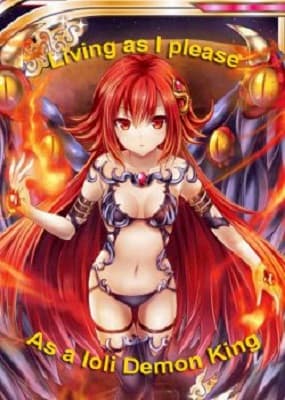 |
One day, Ryusei Homura and all his classmates are transported to another world where they are asked to help in defeating the 12 Demon Kings. Ryusei was always looked at as an idiot, a weirdo and a pervert who always stares at girls’ breasts. He was always bullied and beaten More → |
Category: Action, Adult, Adventure, Ecchi, Fantasy, Gender Bender, Shoujo Ai, Harem, Romance, Yuri
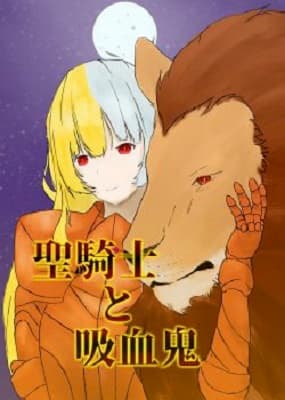 |
The holy knight Carmen never questioned his beliefs, even while he laid dying at the hands of a vampire. But death would not be the end for him. When Carmen next woke up, he found himself “alive” once again in the body of an animated corpse—a zombie—that was forced to More → |
Category: Action, Ecchi, Fantasy, Gender Bender, School Life, R18+, Supernatural
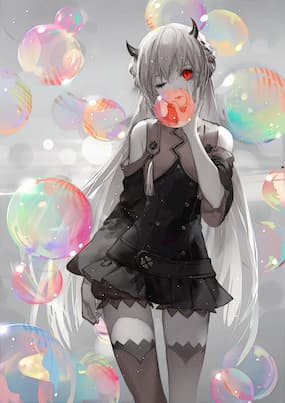 |
Yuuma Akiyama is a popular high schoolboy loved by the girls and hated by the average boy and is secretly an otaku at heart. After an unfortunate accident, he dies saving someone he cares about only to be reincarnated into a More → |
Category: Fantasy, Gender Bender, Shoujo Ai, School Life, Slice of Life
 |
The protagonist, having lost his parents with no relatives to take care of him and his little sister, was in a dilemma. Having no place to live and unable to get a job to support both him and his sister considering he’s just supposed to start high school this year, his future was looking grim. While pondering, a More → |
Category: Action, Adult, Adventure, Gender Bender, Shoujo Ai, Harem, Romance, Slice of Life, Yuri
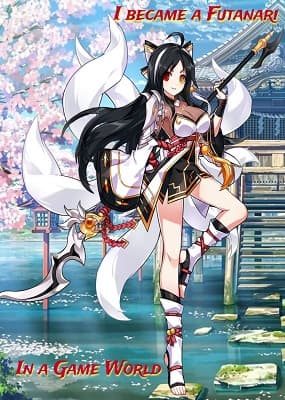 |
Astral Storm Online. The world’s most famous fantasy MMORPG where the player Yamato Hideriki reigns as the free to play Empress Izunahime. One day he wins a lottery and his prize is the chance to try out the new VR (Virtual Reality) gear. A complete and immersed experience inside the More → |
Category: Action, Fantasy, Gender Bender, Shoujo Ai, Romance, Slice of Life, Yuri
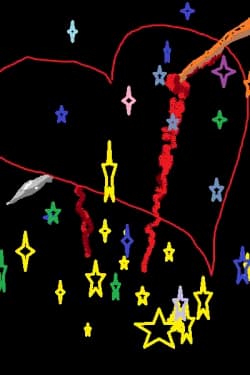 |
eremy Hillstone was quite normal. Just your average, everyday fella. Maybe his luck with women was a bit bad. But he was content with his life. Unfortunately, that life had to end as he was transported into another world. Only now he is a… she. And her luck with women is as bad as ever.More → |
Category: Gender Bender, School Life, Adventure, Action, Fantasy, Supernatural, Fan Fiction, Crossover
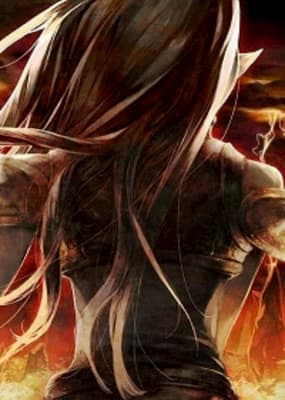 |
Celestial Diary… That was a diary that could change your perspective of how you viewed the world. The diary was but the record of a mortal man’s daily life, but it contained all the secrets of the world. It was the record of how a man ascended to godhood. Whoever More → |
Category: Action, Adventure, Fantasy, Mature, Shoujo Ai, Yuri
 |
Evelyn Princess Summer (to clarify: she’s not a princess), a young, achieved and smart woman at the peak of her career but a chance meeting with a mysterious woman completely derailed her life. She found out that not only do supernatural creatures exist, but a demon wanted her destroyed and More → |
Click on any of the links below to check out our translated novels!
Displaying the top 20 most viewed novels over the last 30 days.
Updated as of 05 October, 2024
Category: Ecchi, Fantasy, Gender Bender, Martial Arts, Shoujo Ai, Yuri
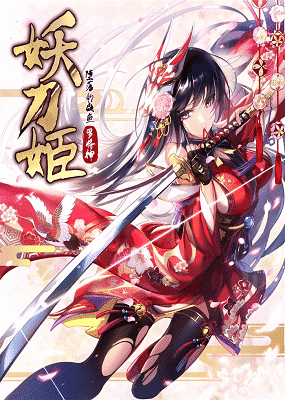 |
In a thrilling tale of otherworldly dimensions, a young boy finds himself thrust into a dark and mysterious parallel world, inhabiting the body of his senior sister, Lily. On her very first day in this enigmatic realm, Lily encounters the mesmerizing night parade of a hundred demons, setting off a chain of events that will test her resilience and survival instincts. More →
Alternative titles: Maiden of the Cursed Blade, Blade Maiden |
Category: Action, Adventure, Fantasy, Gender Bender, Harem, Yuri
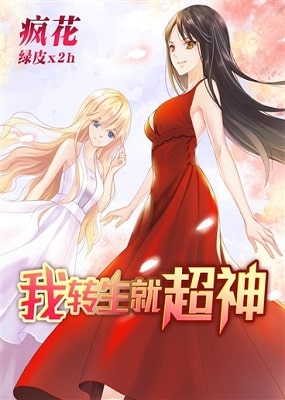 |
In the highly anticipated release of the first-ever VRMMO, Yeager found himself mysteriously traveled back in time. He is poised to rise to the summit and achieve the impossible. Armed with years of gaming experience and a wealth of strategic knowledge from the future, Yeager believes he can bring about the miracle of immortality. But just as the game begins, fate takes an unexpected twist as Yeager finds himself transformed into a young woman. More → |
Category: Action, Adventure, Fantasy, Gender Bender, Sci-fi
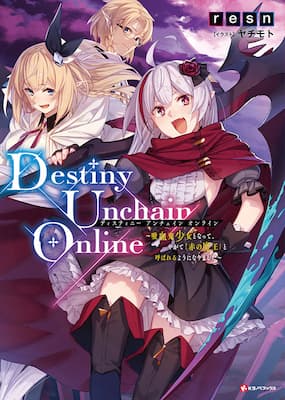 |
In the near future, the full-dive Virtual Reality technology will be commonly utilized in daily life.
Mitsuki Kou is enlisted by his father, the developer of the new VRMMORPG “Destiny Unchain Online,” which features a skill system that prioritizes player abilities and Player versus Player over leveling, to test a revolutionary human interface device on the game’s release day. However, he inexplicably finds himself transformed into a vampire girl and trapped in the game with no means of logging out. More → |
Category: Adventure, Fantasy, Gender Bender, Shoujo Ai
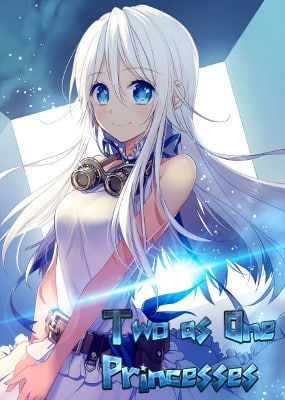 |
Just when I thought that I died, I realized that I was reincarnated inside a girl in another world.
However, the girl has her own consciousness. In other words, I seem to be possessing the girl. That’s still fine. But why was the girl chained inside a prison cell? And More → |
Category: Action, Adventure, Fantasy, Gender Bender
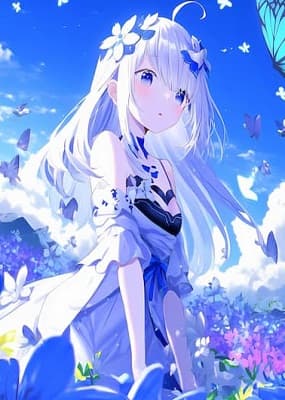 |
Laika Galactica was a grave criminal. The punishment imposed on him was the capital punishment of a thousand years of confinement, his mind abraded and not even granted the relief of death. He was locked in what seemed like a perpetual darkness, his flesh replaced each time it decayed.
After spending a thousand years—enough time for an average person to go mad several times over—like that, the body he ended up with was that of… a frail little girl. More → |
Category: Adventure, Fantasy, Gender Bender, Supernatural
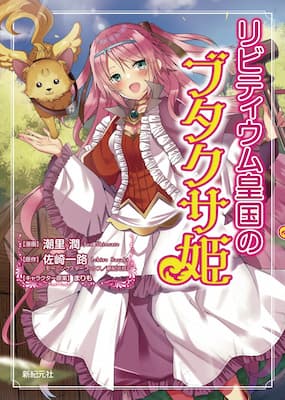 |
In the Frontier County of Aulanthia of the Livitium Imperial Kingdom, there lives Princess Syltianna who is……so ugly, both in her face and in her personality. One day, Princess Syltianna, widely known with the name the Ragweed Princess of the Livitium Imperial Kingdom, is evicted by the First Queen Consort and killed in a dark forest inhabited by demon beasts. She is then saved by a passing witch, and upon her revival, she regains her memory of her previous life as a high school boy on Earth, and decides to live in the forest as the witch’s apprentice. More → |
Category: Adventure, Comedy, Fantasy, Gender Bender
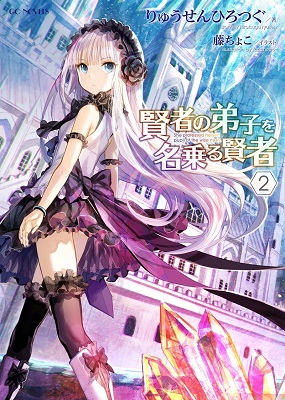 |
Sakimori Kagami plays a VRMMORPG called Ark Earth Online. He is a veteran player with the name and appearance similar to an elderly bearded wizard from a certain book about a ring.
One day he purchases an appearance change item as a last resort to spend expiring currency and gets More → |
Category: Comedy, Drama, Gender Bender, School Life, Slice of Life
 |
After getting killed, my next life is that of a rich family’s daughter who’s hated by the public!? Moreover, it’s several years in the future after I died, what’s with that? Besides, I don’t have any idea about the female lifestyle. I was a man, alright? I’m hesitant about living life in her place. But living like she would will only lead to ruin and I’m not into that. In that case, there shouldn’t be any problems with me living her life the way I do now, isn’t there? Involving both the past and the present, the curtain rises for the chaotic struggles of the replaced young lady. More → |
Category: Action, Adventure, Comedy, Fantasy, Gender Bender
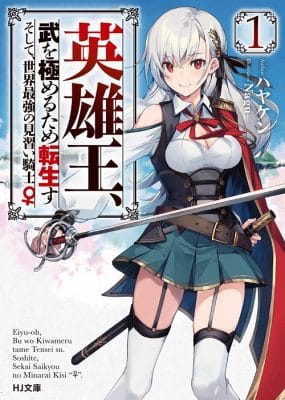 |
King Inglis, who lived for his country and people, strongly hopes that in his next life, “I want to further temper my skills as a knight.” The wish is heard by the goddess who reincarnates the king into the far future but in the form of a cute girl! Moreover More → |
Category: Comedy, Gender Bender, Harem, Fantasy, School Life, Yuri
 |
We, Aristides Castro G Morris Brooklyn Washington Napoleon George I, are the lord of this empire. Our demise art the result of saving our people from impending disaster. In order to award us for our glorious achievement, the goddess hast granted us the chance at rebirth. However… why did we More → |
Category: Fantasy, Gender Bender, School Life, Slice of Life
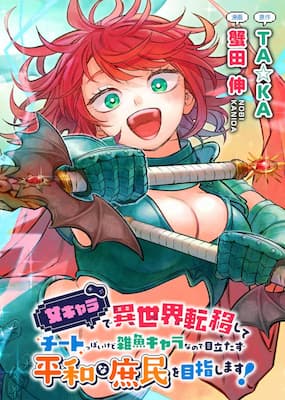 |
After waking up, I discover that I’ve been transformed into the female character I once casually played—a low-level, weak character at high risk of defeat by more seasoned players. Determined to survive, I resolve to live quietly and avoid attracting attention in this perilous environment.
Despite retaining the memories of my former life as an “old man,” I find my personality subtly aligning with my new, youthful female identity—More → |
Category: Fantasy, Gender Bender
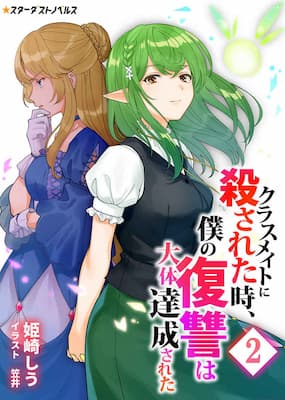 |
Makoto is summoned to another world with his classmates and gains the skill Contract. Realizing quickly that he had gained this skill, he made a contract with the king to ensure the safety of his classmates in case the Kingdom of Flaus, the kingdom that summoned his classmates as heroes, had some nefarious plans for them. However, his classmates, who are unaware of his true skills, begin to bully him for taking the liberty of doing so. More → |
Category: Fantasy, Gender Bender
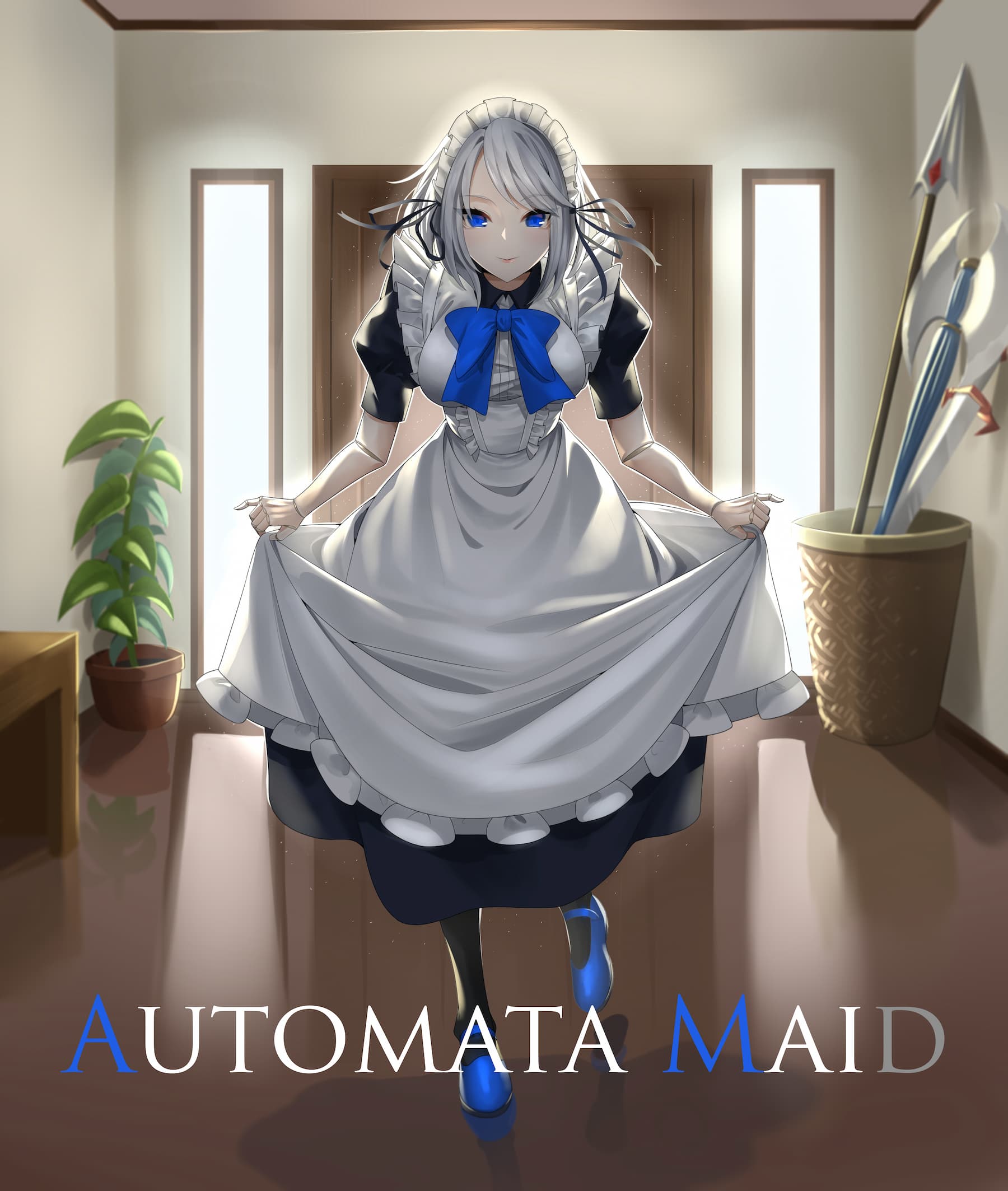 |
After being reborn as a female automaton in another world, I hide my past life, working as a maid for the sorcerer that created me. My new life was sometimes difficult, sometimes enjoyable, and sometimes I questioned my own worth, not being a human anymore, or an actual living being for that matter. More → |
Category: Adventure, Drama, Fantasy, Gender Bender, Psychological, Shoujo-Ai
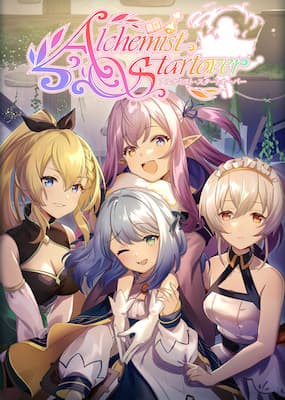 |
Once an orphan turned street child, and later almost killed by a foster father, the genius alchemist Glass Dimelia had walked a life of misfortune. Ravaged by illness at a young age, Glass devoted himself to his final research in a desperate bid to defy death, only to be sentenced to execution by a Kamut, the agent of the goddess, for touching the forbidden. More → |
Category: Action, Adventure, Comedy, Drama, Fantasy, Gender Bender, Romance, Shoujo
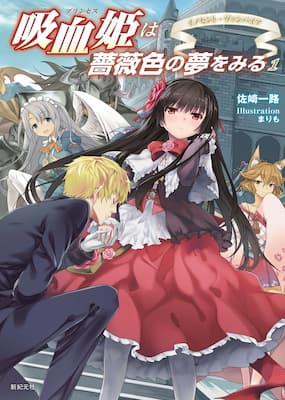 |
I-, who was suppose to die in an accident, awakened as my vampire princess character from “Eternal Horizon Online”. It turned out that I together with my entire pet, assets, and territory from within the game had been transferred into a different world similar to that game. More → |
Category: Girls Love (GL), Romance, Yuri
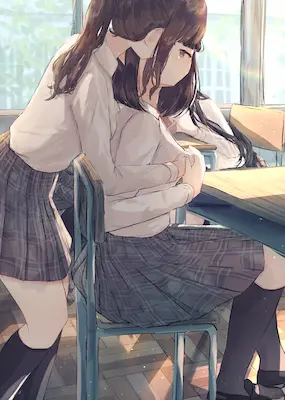 |
I was asked to become lovers in this timeline too. But I don’t remember the past one. One day, Amakawa Iroha, who had fled home, found herself sheltered by her extrovert classmate, Inadzuki Misora.
A month later, Iroha expressed her desire to repay Misora for letting her stay for free. Misora responded, “Then I want you to recall the memories of us being lovers in the previous timeline.” More → |
Category: Action, Adventure, Fantasy, Gender Bender, Romance, Slice of Life
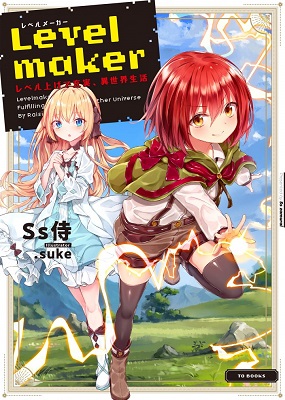 |
The second year high school student and RPG enthusiast, Joujou Ayumu has an accident because of carelessness and dies before confessing his feelings to his childhood friend. However, thanks to the compassion of Jizou, the guardian deity for children in his neighborhood, he is sent to another world – Anazumu.
He tempers his heart and starts raising his level, fighting monsters, obtaining many powerful skills… crafting things… and becoming a woman______! More → |
Category: Adventure, Fantasy, Gender Bender, Romance, School Life, Shoujo Ai, Slice of Life, Yuri
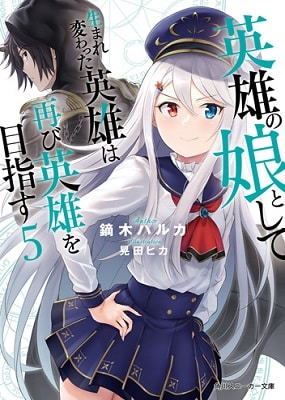 |
One of the six people called heroes, Reid, fought alone against the Devil, and ended up dead. After meeting with a suspicious god, he woke up again and found out he has born again as a baby. Moreover, as a daughter of his former companions. In order to regain his More →
Status: Completed. |
Category: Adventure, Fantasy, Gender Bender, Shoujo Ai, Slice of Life
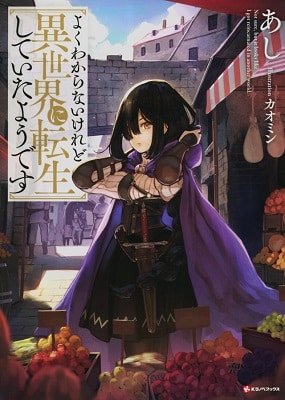 |
Ren, a ten year old orphan girl, was en route to being delivered to a corrupt merchant. However, bandits attacked the carriage she was on and caused it to plummet down the sides of a cliff. But the impact from the accident awoken her memories from a past life. More →
Status: Completely Translated. |
Category: Action, Drama, Fantasy, Gender Bender
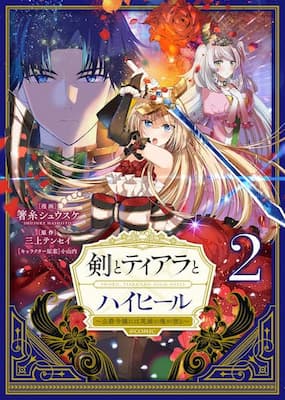 |
The kingdom’s hero, Orthus (♂), dies in battle after failing to fulfil a promise he made to protect the kingdom for the rest of his life. When he wakes up, he finds that he has been reincarnated as Seretina, the duke’s daughter! Even though she’s a lovely, beautiful girl, she’s still the same and determined to become a knight to protect her country in this life. However, besides being sickly and fragile, she is also faced with the harsh fate of a lady. She has to learn manners from her horrible mother, marry a man she doesn’t want to marry, and many other challenges that will keep her from becoming a knight. More → |